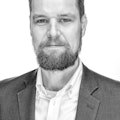There are few environments where rapid, reliable communication is as essential as in the healthcare markets. Providers face a host of complex and time-sensitive situations that often require fast communication strategies while securing the delivery of patient information. It is somewhat surprising that in many of these facilities, the options available for quick and secure communication can be limited.
The reason for this is simple but complex. The Health Insurance Portability and Accountability Act (HIPAA) ensures that healthcare professionals comply with specific standards to protect patient health information. While HIPAA is designed to safeguard security and privacy, it also has had the unintended consequence of limiting communication methods in a healthcare setting. Healthcare professionals would openly embrace consumer-friendly options, but they are not HIPAA-compliant. So, where does that leave the industry?
Fortunately, there are several solutions purpose-built for these dynamic, evolving environments.
Healthcare professionals require secure communications solutions for patient care, health information, and safety. The need to balance safety and security with a welcoming environment requires a unique and comprehensive approach that maintains this delicate equilibrium and facilitates the necessary coordination across a wide variety of functions.
Robust processes and standard operating procedures create a solid baseline, but technology plays a paramount role. The use of devices and systems, such as video, access control, communications infrastructure, and intercoms, provide peace of mind because these systems collect valuable data that give insight and protection. Still, with traditional communications efforts relying primarily on call and radio updates, visibility can be limited when providers and patients need it the most.
A strategy that incorporates unified communication and intercom solutions with patient care and secure information systems can help providers and administrators oversee any security incidents and direct the full spectrum of patient care. One of the biggest trends in this area is the introduction of integrated remote patient care solutions. Let's look at how these systems can benefit healthcare facilities from safety and health perspectives.
Rapid response and effective communication can positively affect patient health, especially in critical care facilities. Audio, video, AI, and patient management technologies are essential tools to provide layered, holistic care. These tools also support efficient communication within high-risk areas, such as COVID care areas, maternity wards, pharmacies, nurseries, and limited access environments.
Virtual observation solutions often serve as the first line of support for at risk-patients, alerting staff to intervene when an individual attempts to leave the room, for example. However, these systems are only helpful if they can deliver timely information, integrate with other applications, and share data with outside clinicians when needed.
Because of emerging risk profiles and complex situations, healthcare facilities require integrated solutions that make providers more efficient and keep patients safe and well. Integrating AI-empowered IP cameras, patient management software, and advanced audio platforms enables 24/7 centralized patient monitoring and remote observation of patient rooms, acute care patients, and specialized units within a hospital. These integrated systems are critical components to help coordinate care across a community of providers — all working together to streamline and improve patient health.
Video and audio-enabled tele-sitter platforms can be embedded within a facility's electronic records environment to support remote patient observation, remote care, and fall monitoring. These solutions allow staff to monitor patients from a single pane of glass with video and audio from a remote workstation to the patient room.
For regular operations, acoustic room surveillance makes it easy to keep many rooms and patients under observation as needed. But audio must be supported by solutions that offer high audio quality and intelligibility. Intelligent platforms empower operators to customize alerts based on individual patient needs, while on-site providers can listen proactively and simultaneously into multiple rooms. Beyond patient care use cases, public address and messaging platforms are highly valuable tools to help ensure security, safety, and operational efficiencies across the hospital campus. This approach is a perfect example of integrating various systems to drive greater awareness and safety.
Over the past two years, the COVID-19 pandemic brought a greater focus on healthcare operations as a whole and what can be done to enhance care and symptom monitoring further. The results of those intelligent conversations have been an increase in technology designed to deliver a multi-layered approach to patient engagement and on-demand mobile care. Healthcare facilities' capacities for highly integrated, remote, and practical solutions strengthen as more and more patients and providers become comfortable with these new technologies. Life-saving decisions often must be made at a moment's notice and ensuring reliable information sharing and communication is where the value of integrated audio, video, and data platforms comes into play. All of these reduce unnecessary human intervention while clinical efficiency is elevated with two-way communication.
Healthcare organizations across the globe rely on advanced technologies every day to deliver the performance and resilience necessary to address today's modern-day healthcare challenges. As providers seek new ways of increasing patient safety, providers can count on these purpose-built technologies to support increased security and communication that pushes the edge of innovation and leads to greater patient care.
Tom Reilly is the president of Commend Americas.
About the Author

Tom Reilly
President, Commend Americas
Tom Reilly is the President of Commend Americas a provider of intercom and related solutions.
(201) 529-2425
